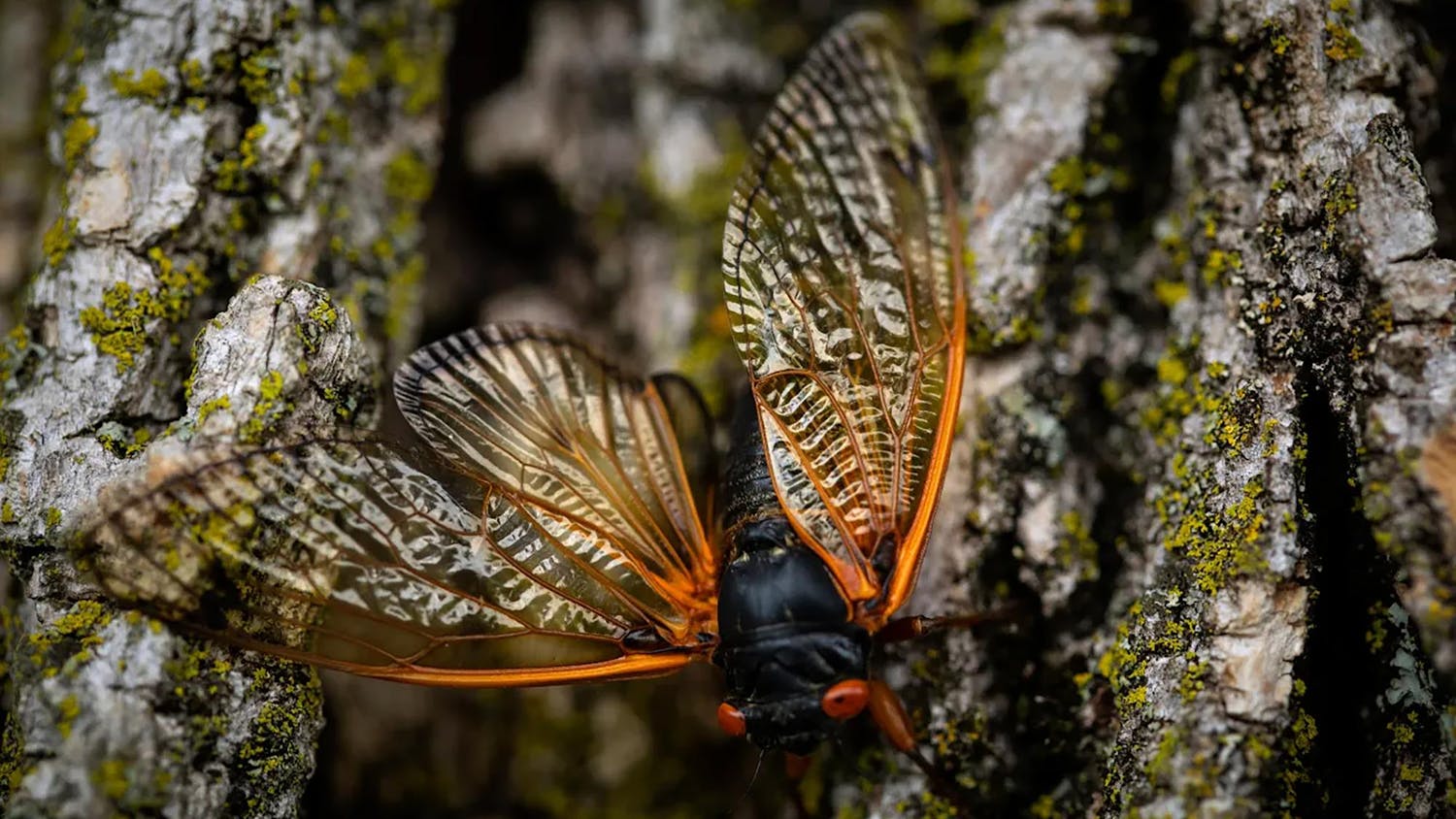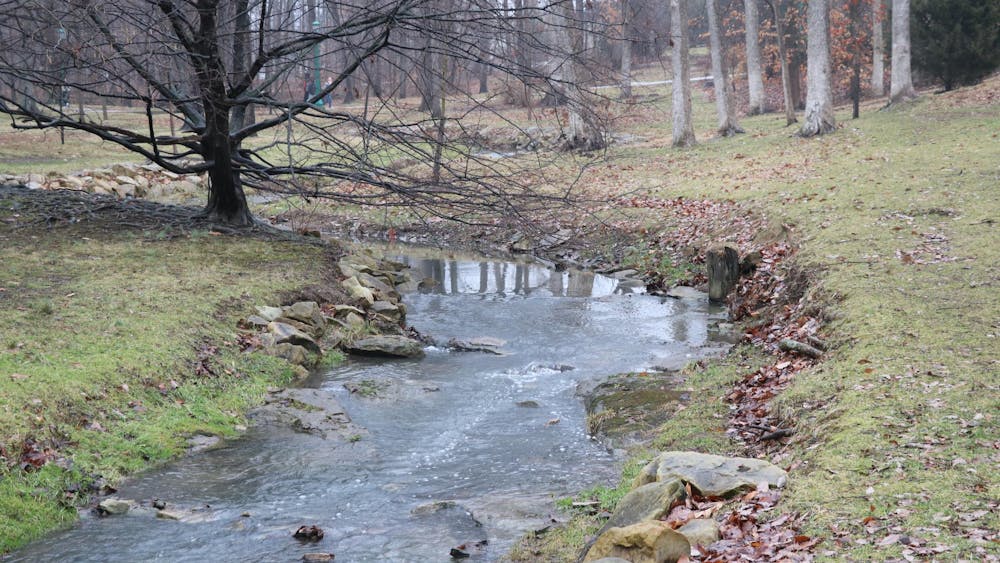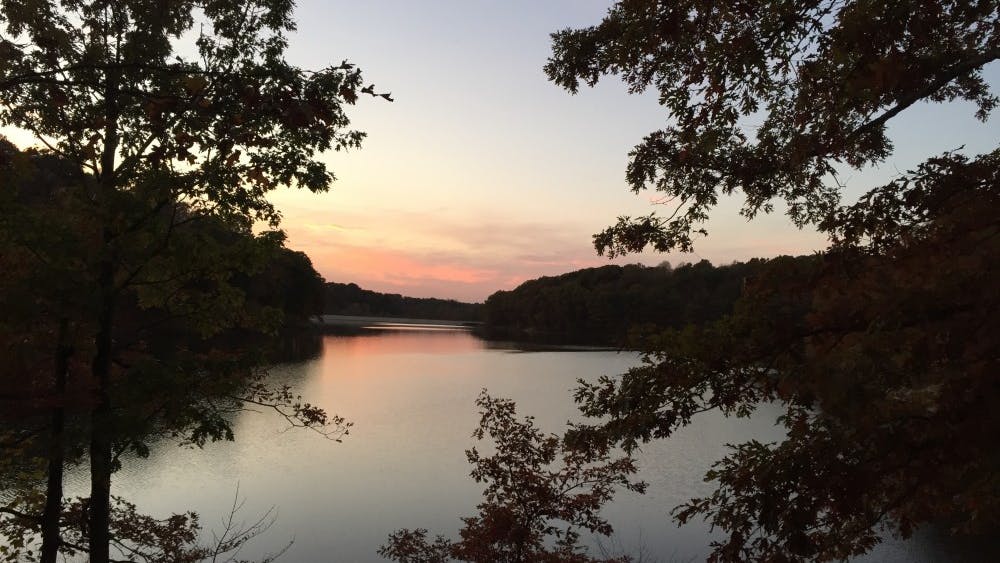Every winter, murders descend upon Bloomington.
No, not a spike in crime — a “murder” is one name for a flock of crows.
“It’s a rather draconian term,” said John Castrale, a non-game bird biologist with the Indiana Division of Fish and Wildlife.
Castrale explained why the birds flock to Bloomington by the thousands each year.
“Crows are social animals,” he said. “During the winter they form night roosts in protected areas.
That lasts through the winter until mating season in the spring.”
Though the cacophony of crow caws can be an annoyance, Castrale said they do not pose a large health threat.
“There are some potential health concerns with accumulations of droppings below the trees they roost in,” he said. “The richness in the droppings can stimulate some naturally occurring fungus in the soil that could cause health problems.”
One area in Bloomington that became a roost for crows this winter was West Second Street, near Kroger.
“The one problem was how foul it was as far as the droppings,” said Kevin Hall, manager of Second Street Antique Mall. “It was weird, that’s for sure.”
Because the crows return to their roost in the evening, around sunset, Hall said the birds did not inhibit his business, which closes at 6 p.m. He said the large amount of crows are gone now.
Assistant professor of biology Jim Hengeveld rationalized that the migration to urban areas probably began out of a desire for safety.
“They typically roost in tall trees, which can be found in the city,” he said. “In the winter time it’s usually a little bit warmer in urban areas. There is also more artificial lighting.”
This provides protection from owls, the primary predators for crows, he said.
Though some individuals put up owl statues in an attempt to scare the birds away, Hengeveld said it’s ineffective.
“Putting up models of great horned owls totally does not work,” he said.
Rather, more effective methods include loud banging noises, or broadcasting recordings of crow distress calls. But it’s a tedious process.
“You have to do it every night, and you have to do it through the whole period of roosting,” he said.
Comfort is a large part of the reason for the return of the crows each year.
“There’s a history here. Birds learn from year to year, and the information is passed on from generation to generation,” Castrale said.
Hengeveld said the Bloomington roost may be increasing.
“It seems like the crow roost, if anything, has been getting slowly bigger over the years,” Hengeveld said. “I would imagine that they are 10 to 20 thousand in number.”
He said the roost is composed of both local birds and migrants.
“A lot of them are from the general area year-round, and a lot of them probably are migrant birds that migrate from farther north,” he said.
However, as the spring mating approaches, the winter crow roosts will dismantle.
“They should start dissipating in the next couple of weeks. The migrant crows will be moving in the next couple of weeks,” he said. “The resident crows will start breeding in the next three to four weeks. In another month, the roosts will have dissipated.”
Until next year, when the murders will return.
“That’s kind of just the nature of the beast,” Castrale said.
Bloomington crow flocking, roosting season nearing end
Non-game biologist says birds do not pose health threat
Get stories like this in your inbox
Subscribe





